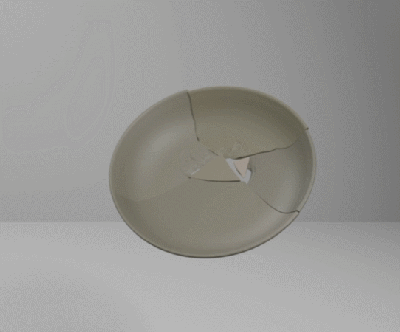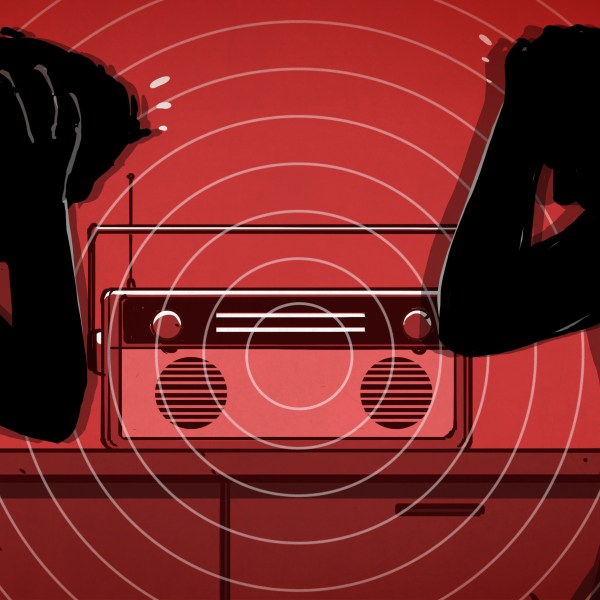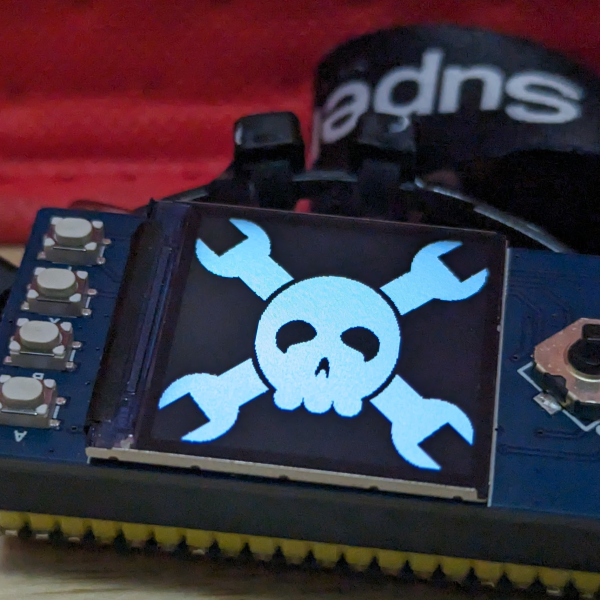It’s been a while since we’ve dunked on an autonomous taxi foul-up, mainly because it seemed for a while there that most of the companies field testing driverless ride-sharing services had either ceased operation or curtailed them significantly. But that appears not to be the case after a Waymo robotaxi got stuck in a Chick-fil-A drive-through. The incident occurred at the chicken giant’s Santa Monica, California location at about 9:30 at night, when the autonomous Jaguar got stuck after dropping off a passenger in the parking lot. The car apparently tried to use the drive-through lane to execute a multi-point turn but ended up across the entrance, blocking other vehicles seeking their late-evening chicken fix. The drive-through-only restaurant ended up closing for a short time while Waymo figured out how to get the vehicle moving again.
3D Printed Milling Machine Is Solid As A Rock
There are no shortage of CNC machines in the DIY space these days, but sometimes you just need to do things your own way. That’s what [Chris Borges] decided when he put together this rock-solid, concrete-filled CNC milling machine.
The concrete body of this machine is housed inside a 3D printed shell, which makes for an attractive skin as well as a handy mold. Within the concrete is a steel skeleton, with the ‘rebar’ being made of threaded rods and a length of square tubing to hold the main column. You can see the concrete being poured in around the rebar in the image, or watch it happen in the build video embedded below.
![An image of the main column of [Chris]'s CNC mill as the concrete is added. The steel reinforcement is clearly visible.](https://hackaday.com/wp-content/uploads/2025/04/pouring-concrete-mill.png?w=400)
Given that [Chris] has apparently never used a true mill before, this design came out remarkably well. Between the Bill of Materials and 45 page step-by-step assembly instructions, he’s also done a fantastic job documenting the build for anyone who wants to put one together for themselves.
This isn’t the first concrete-filled project we’ve highlighted from [Chris], you may remember seeing his lathe on these pages. It certainly isn’t the first CNC mill we’ve covered, either.
Continue reading “3D Printed Milling Machine Is Solid As A Rock”
The Spade Hardware Description Language
Spade is an open-source hardware description language (HDL) developed at Linköping University, Sweden.
Other HDLs you might have heard of include Verilog and VHDL. Hardware engineers use HDLs to define hardware which can be rendered in silicon. Hardware defined in HDLs might look like software, but actually it’s not software, it’s hardware description. This hardware can be realized myriad ways including in an FPGA or with an ASIC.
 You have probably heard that your CPU processes instructions in a pipeline. Spade has first-class support for such pipelines. This means that design activities such as re-timing and re-pipelining are much easier than in other HDLs where the designer has to implement these by hand. (Note: backward justification is NP-hard, we’re not sure how Spade supports this, if it does at all. If you know please enlighten us in the comments!)
You have probably heard that your CPU processes instructions in a pipeline. Spade has first-class support for such pipelines. This means that design activities such as re-timing and re-pipelining are much easier than in other HDLs where the designer has to implement these by hand. (Note: backward justification is NP-hard, we’re not sure how Spade supports this, if it does at all. If you know please enlighten us in the comments!)
Spade implements a type system for strong and static typing inspired by the Rust programming language and can do type inference. It supports pattern matching such as you might see in a typical functional programming language. It boasts having user-friendly and helpful error messages and tooling.
Spade is a work in progress so please expect missing features and breaking changes. The documentation is in The Spade Book. If you’re interested you can follow development on GitLab or Discord.
So now that you know about the Spade language, are you planning to take it for a spin? You will find plenty of Verilog/VHDL designs at Hackaday which you could re-implement using Spade, such as an easy one like Breathing LED Done With Raw Logic Synthesized From A Verilog Design (see benchmarks) or a much more challenging one like Game Boy Recreated In Verilog. If you give Spade a go we’d love to see what you come up with!
Satisfy Your High-Voltage Urges With This Printable Flyback Transformer
Sick of raiding old TVs and CRT monitors for flyback transformers to feed your high-voltage addiction? Never fear; if you’re careful, a 3D-printed flyback might be just the thing you’re looking for.
To be fair, it’s pretty easy to come by new flyback transformers, so building your own isn’t strictly necessary. But [SciTubeHD] was in the market for a particularly large flyback, in a good-natured effort to displace [Jay Bowles] from his lofty perch atop the flyback heap. And it’s also true that this project isn’t entirely 3D-printed, as the split core of the transformer was sourced commercially. The secondary coil, though, was where most of the effort went, with a secondary form made from multiple snap-together discs epoxied together for good measure. The secondary has about a kilometer of 30-gauge magnet wire while the primary holds just ten turns of 8-gauge wire covered with silicone high-voltage insulation.
To decrease the likelihood of arcing, the transformer was placed in a plastic container filled with enough mineral oil liquid dielectric to cover the secondary. After degassing in a vacuum chamber for a day, [SciTubeHD] hooked the primary to a couple of different but equally formidable-looking full-bridge inverters for testing. The coil was capable of some pretty spicy arcs — [SciTubeHD] measured 20 amps draw at 35 volts AC input, so this thing isn’t to be trifled with. STL files for the core parts are coming up soon; we trust schematics for the power supply will be available, too.
Continue reading “Satisfy Your High-Voltage Urges With This Printable Flyback Transformer”
Software Project Pieces Broken Bits Back Together
With all the attention on LLMs (Large Language Models) and image generators lately, it’s nice to see some of the more niche and unusual applications of machine learning. GARF (Generalizeable 3D reAssembly for Real-world Fractures) is one such project.
GARF may play fast and loose with acronym formation, but it certainly knows how to be picky when it counts. Its whole job is to look at the pieces of a broken object and accurately figure out how to fit the pieces back together, even if there are some missing bits or the edges aren’t clean.

Efficiently and accurately figuring out how to re-assemble different pieces into a whole is not a trivial task. One may think it can in theory be brute-forced, but the complexity of such a job rapidly becomes immense. That’s where machine learning methods come in, as researchers created a system that can do exactly that. It addresses the challenge of generalizing from a synthetic data set (in which computer-generated objects are broken and analyzed for training) and successfully applying it to the kinds of highly complex breakage patterns that are seen in real-world objects like bones, recovered archaeological artifacts, and more.
The system is essentially a highly adept 3D puzzle solver, but an entirely different beast from something like this jigsaw puzzle solving pick-and-place robot. Instead of working on flat pieces with clean, predictable edges it handles 3D scanned fragments with complex break patterns even if the edges are imperfect, or there are missing pieces.
GARF is exactly the kind of software framework that is worth keeping in the back of one’s mind just in case it comes in handy some day. The GitHub repository contains the code (although at this moment the custom dataset is not yet uploaded) but there is also a demo available for the curious.
Learning Linux Kernel Modules Using COM Binary Support
Have you ever felt the urge to make your own private binary format for use in Linux? Perhaps you have looked at creating the smallest possible binary when compiling a project, and felt disgusted with how bloated the ELF format is? If you are like [Brian Raiter], then this has led you down many rabbit holes, with the conclusion being that flat binary formats are the way to go if you want sleek, streamlined binaries. These are formats like COM, which many know from MS-DOS, but which was already around in the CP/M days. Here ‘flat’ means that the entire binary is loaded into RAM without any fuss or foreplay.
Although Linux does not (yet) support this binary format, the good news is that you can learn how to write kernel modules by implementing COM support for the Linux kernel. In the article [Brian] takes us down this COM rabbit hole, which involves setting up a kernel module development environment and exploring how to implement a binary file format. This leads us past familiar paths for those who have looked at e.g. how the Linux kernel handles the shebang (#!) and ‘misc’ formats.
On Windows, the kernel identifies the COM file by its extension, after which it gives it 640 kB & an interrupt table to play with. The kernel module does pretty much the same, which still involves a lot of code.
Of course, this particular rabbit hole wasn’t deep enough yet, so the COM format was extended into the .♚ (Unicode U+265A) format, because this is 2025 and we have to use all those Unicode glyphs for something. This format extension allows for amazing things like automatically exiting after finishing execution (like crashing).
At the end of all these efforts we have not only learned how to write kernel modules and add new binary file formats to Linux, we have also learned to embrace the freedom of accepting the richness of the Unicode glyph space, rather than remain confined by ASCII. All of which is perfectly fine.
Top image: Illustration of [Brian Raiter] surveying the fruits of his labor by [Bomberanian]
A 17th Century Music Computer
We don’t think of computers as something you’d find in the 17th century. But [Levi McClain] found plans for one in a book — books, actually — by [Athanasius Kirker] about music. The arca musarithmica, a machine to allow people with no experience to compose church music, might not fit our usual definition of a computer, but as [Levi] points out in the video below, there are a number of similarities to mechanical computers like slide rules.
Apparently, there are a few of these left in the world, but as you’d expect, they are quite rare. So [Levi] decided to take the plans from the book along with some information available publicly and build his own.

















